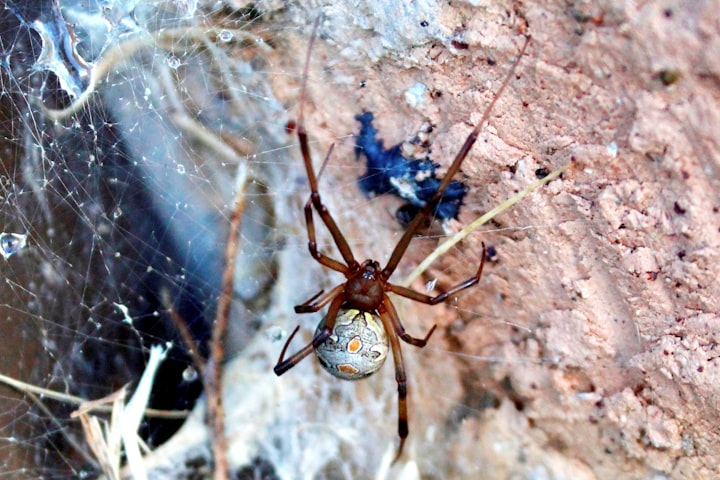World Top 10 littlest creatures
It's not difficult to overemphasize the huge creatures, similar to elephants, whales and bears. In any case, shouldn't something be said about the littlest creatures? It ends up, being little can really be an extraordinary assistance. Minuscule animals need less food and water to endure. They can likewise get into little concealing spots to rest and get away from risk.

10. The Monte Iberia sleuth is a tiny frog that grows to be 0.4 inches.
The Monte Iberia sleuth, or Eleutherodactylus Iberia, is the smallest frog in the Northern hemisphere. It's tied for the world's smallest tetrapod with another frog, Brachycephalus didactylus. Both reach only about 0.4 inches (1 centimeter) in size. The Monte Iberia sleuth is a dwarf frog (though it is often simply referred to as the Monte Iberia frog), only growing to be less than half an inch in length. In the entire world, the only frog that is quite as small is the Brazilian Golden frog. Mar 30, 2021
9. A Brookesia Micra grows to be only 1 inch long.
The average adult Brookesia micra chameleon grows to be just over 1 inch (2.5 centimeters) long. That's small enough to sit on top of a human finger. Micra species grow to only just over a half-inch (16 millimeters) from nose to bottom, making them one of the smallest vertebrates ever found on Earth. From nose to tail, adults of both sexes grow to only 1 inch (30 mm) in length. A juvenile Brookesia Micra stands on a match head.
8. Williams' dwarf gecko is just 3 inches.
Known by many as the Turquoise or Electric Blue Gecko, the average adult Williams' dwarf gecko, or Lygodactylus williamsi, is just 3 inches (7.6 centimeters) long. Found only in Tanzania, the species is considered critically endangered.
The smallest extant geckos are the dwarf geckos belonging to the genus Sphaerodactylus. Two in particular – the Jaragua dwarf gecko (S. ariasae) from the Dominican Republic and the Virgin Islands dwarf gecko (S.
7. Speckled padloper tortoises can be as small as 2.4 inches long.
The smallest species of tortoise on Earth is the speckled padloper tortoise, or Homopus signatus. It grows to be between 2.4-3.1 inches (6.1-7.9 centimeters) long. The entire population of the species exists exclusively in the Little Namaqualand region of South A Speckled padloper tortoises can be as small as 2.4 inches long. The smallest species of tortoise on Earth is the speckled padloper tortoise, or Homopus signatus. It grows to be between 2.4-3.1 inches (6.1-7.9 centimeters)
6. The pygmy rabbit can be as small as 9.25 inches long.
Averaging 9.25-11.6 inches (23.5-29.5 centimeters) in length, the endangered pygmy rabbit, or Brachylagus idahoensis, lives primarily on the West Coast of the United States. They tend to live in tall, dense sagebrush, which also makes up the majority of their diets.
5. Bee Hummingbird (Mellisuga helenae)
The bee hummingbird is Earth's smallest bird. This little bird is only 5.5 centimeters (2.2 inches long). It weighs 17 grams (.06 ounces)—that's how much three quarters weigh. This tiny bird has big energy. It needs ten times the energy used by marathon runners on their 42-kilometer (26-mile) trips. No wonder it eats its weight in flower nectar and insects every day!
The bee hummingbird is more like a helicopter. This tiny bird can fly about 40-48 kilometers per hour (25-30 miles per hour) and turn its wings all the way around. Its wings move so fast that they "hum." It can also fly backward and stop in mid-air. It spends more time in the air than any other hummingbird. The bee hummingbird can visit up to 1,500 flowers in one day. It uses its long tongue to eat insects and spiders it finds inside.
Today, the tiny bird lives in Cuba, Jamaica and Haiti. You can find it in forests, mountain valleys, swampy areas and people's gardens.
4. Kitti's Hog-Nosed Bat Or Bumblebee Bat (Craseonycteris thonglongyai)
The smallest bat is only 2.5 centimeters (one inch) long and weighs almost 20 grams (.07 ounces). It is the size of a bumblebee, with a pig-like snout. This bat lives in caves along rivers in Thailand and Burma. But the Kitti's Hog-Nosed bat finds its food in bamboo forests.
This tiny mammal has 28 teeth, large ears and thumbs with claws. It's very good at hovering or staying still in the air. To catch its food, it uses echolocation; it makes a sound that bounces off of an object, and the bat can tell what that object is by listening to the echo. It's great at catching bugs while flying. Sadly, this bat's population is getting smaller. Humans are disturbing its caves and cutting down rainforests.
3. Slender Blind Snakes (Leptotyphlopidae)
The world's smallest snakes are about 10 centimeters (4 inches) long. They're also called thread snakes. They live in many different environments, from rainforests to places almost like deserts. They're spread across North and South America, Africa, and Asia.
Over time, these snakes' eyes have stopped working. This is because they spend their days in dark burrows eating ants and termites. They can do this because these snakes make chemicals that fool termites into letting them live in their nests. Their favorite foods are eggs and caterpillars.
2. Paedocypris
Paedocypris is a group of small cyprinid fish. They are the world's smallest fish and they are less than one centimeter (about .3 inches) long. This tiny fish lives on the island of Sumatra in Indonesia. It is found in swamp forests full of a layer of dead plants, called peat, in water with little oxygen. Paedocypris eats plankton, which are very small plants and animals in the water.
Paedocypris can survive bad droughts, which happen when an area gets less than its normal amount of rain for an extended period of time. But this tiny fish may soon disappear. The peatlands where it lives are being burned to grow oil palm trees.
1. Paedophryne amanuensis
This tiny frog is less than one centimeter (.3 inches) long. It's so small that it can fit on a dime! It wins the title for both smallest frog and smallest vertebrate, or animal with a spine. It was first discovered in New Guinea in 2009. It is so new that it doesn't even have a common name yet.
Paedophryne amanuensis lives in the layer of leaves on tropical forest floors. Its camouflage helps it blend in and survive. It eats small bugs, and it makes sounds like a bug. And though it's little, it can jump 30 times its body length. Like the other animals in this list, this tiny jumper has a lesson for us. It's clear these small but mighty creatures help make our big world special.






Comments
There are no comments for this story
Be the first to respond and start the conversation.